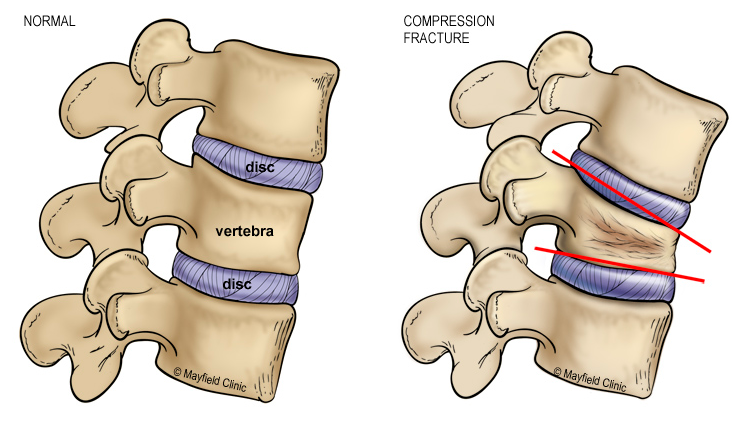Kyphoplasty
At Saint Alphonsus Comprehensive Pain & Spine, we treat the whole person, not just their pain. We help patients take an active role in controlling their pain, beyond the use of drugs, and we focus on achieving the best possible outcomes. One treatment designed to reduce or eliminate back pain associated with vertebral compression fractures (VCF) is called Kyphoplasty. Meeting with a board-certified interventional pain physician, especially one who is well-versed in the most modern kyphoplasty techniques, can be helpful in assessing your fracture, providing education, and determining the best treatment options for you. Fill out the form on the right to see if you are a candidate for Kyphoplasty.
Read more about Kyphoplasty and how it improves lives in this blog article written by Dr. Williams.
To view the answers to the questions below, please click on the downward facing arrow to the left.
Fractures of the spine, commonly referred to as vertebral compression fractures, or “VCFs”, are the most common type of fracture that results from weak bones or osteoporosis. 50% of women and 25% of men aged 50 or older will sustain a VCF in their lifetime.
Pain that limits a patient's function is the primary sign of a compression fracture. VCFs can cause no issues or be so severe they require hospitalization and/or interventional care. VCFs usually occur with minor falls (from ground level) or lifting, but more trivial things like coughing or bending can cause VCFs.

Most often if you have been diagnosed with a compression fracture you are initially treated “conservatively” with pain medications, bedrest, and bracing. Many patients, unfortunately, continue to worsen and find conservative treatments unhelpful. The alternative is to definitively fix the fracture and immediately reduce pain with a procedure called kyphoplasty.
Kyphoplasty (pronounced “KY-foh-plas-tee”) is a minimally invasive, low-risk, outpatient procedure (not surgery). Like treating any fracture, the goals are to re-align and fixate the fracture which eliminates pain.
Outcomes are better the sooner VCFs are fixed with kyphoplasty. It is important to note that there is no minimum time to wait before moving forward. Ultimately, a patient’s pain and function (or decline in function) determines if this is a good option—it is an individualized decision.
The benefits are near-immediate pain relief and improved function which allows patients to resume normal activities immediately. Research definitively shows that patients who get this procedure after a VCF have less pain, better function, higher quality-of-life, a lower chance of death, and tend to live longer.
Kyphoplasty uses either a balloon or implantable device to better restore normal anatomy and creates a cavity for the bone cement to be more safely contained; vertebroplasty does not. Numerous studies show that kyphoplasty is superior to vertebroplasty, especially with regard to pain reduction and mortality.
This technique has been around for decades and is one of the best-studied interventions; in fact, there are over 2,600 published studies on kyphoplasty. Any procedure has risks, but based on the data, kyphoplasty is one of the safest procedures offered by interventional physicians.
For additional information about Kyphoplasty and how it is performed, click here.
Dr. Williams on Life in Balance
Vertebral augmentation procedure with iVAS Elite
balloon system—animation
Vertebral augmentation procedure with iVAS Elite
balloon system—animation

